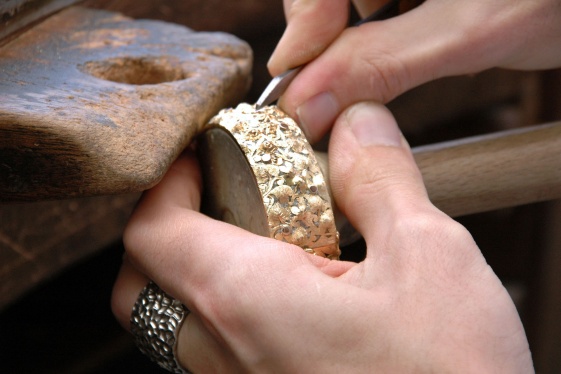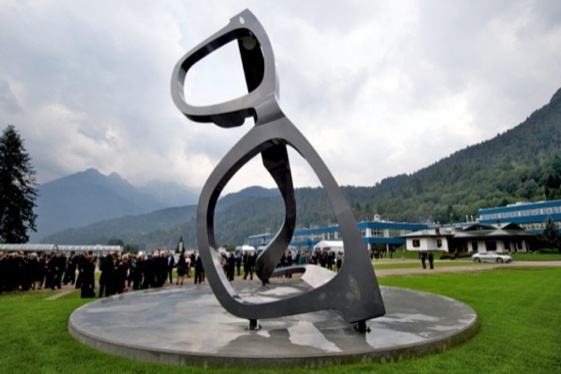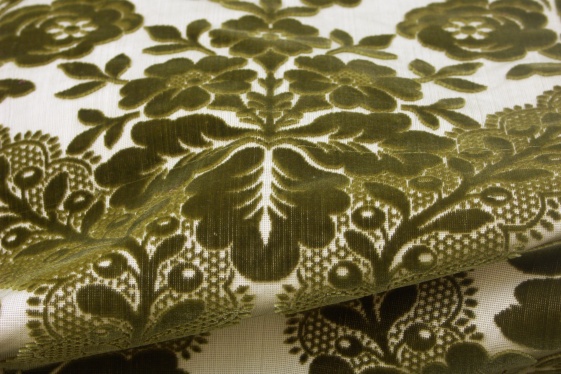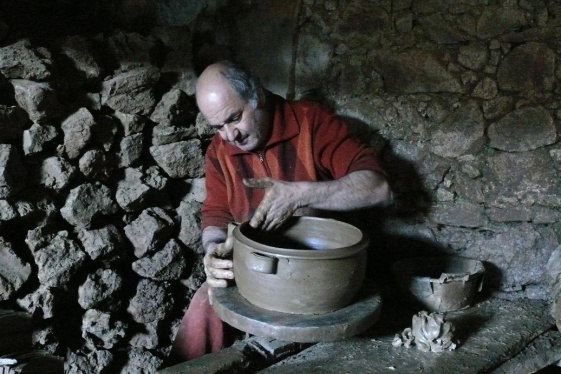Italian handcrafts: The Veneto amusement district, ride-making capital of the world
Between the quiet towns of Bergantino and Melara, tucked along the left bank of the Po River in the province of Rovigo, lies one of Italy’s most extraordinary industrial secrets: the Veneto Amusement Ride District. This global hub for amusement ride manufacturing is nestled in the rural heart of Polesine, a land where centuries-old artisanal tradit...
READ MOREItalian handcrafts: The hidden legacy in Leonardo’s masterpiece and the story of Perugian tablecloths
How many times have you looked at Leonardo da Vinci’s Last Supper? It’s one of the most studied and admired works of art in history. But there’s a detail that most people miss. Right at the center of the table, beneath the hands of Christ and his disciples, lies a white tablecloth adorned with delicate geometric patterns. While it might seem like a...
READ MOREItalian handcrafts: Ancestral goldsmithing in Abruzzo
The Abruzzo region is a land of ancestral traditions and deep-rooted culture, renowned for its goldsmithing — an art that draws on ancient engraving techniques and the use of magical symbols. The locally made jewelry is rich with references to ancient symbolism, legends, superstitions, and age-old rituals meant to bring good fortune. Goldsmithing i...
READ MOREItalian handcrafts: The Belluno eyewear district
Worldwide, the total production of glasses and lenses is valued at about 10 billion euros. Among all countries, Italy is the largest producer in Europe and the second-largest in the world, but we are number one everywhere if we consider just the luxury segment. The heart of all this is the Belluno region in Veneto. When you ask where high-quality e...
READ MOREItalian handcrafts: Traditional craftsmanship of Sicily, a cultural treasure
Sicily, the largest island in the Mediterranean, has a rich and diverse cultural heritage, and its traditional craftsmanship is a testament to this. The island’s history, shaped by centuries of diverse influences, from the ancient Greeks and Romans to the Arabs, Normans, and Spanish, has resulted in a vibrant tapestry of crafts that continue to thr...
READ MOREItalian handcrafts: Zoagli, the art of velvet weaving in the Ligurian riviera
Zoagli is a small village on the Ligurian Riviera of Levante, situated between Rapallo and Chiavari in the Gulf of Tigullio. It is appreciated for its cliffs overlooking the sea and its mule tracks, which offer particularly scenic routes. The village’s significance is tied to the history and tradition of its craftsmanship, which over the centuries...
READ MOREItalian handcrafts: The craft of woodworking in the Aosta Valley, a tradition of excellence
In the Aosta Valley, the art of woodworking has deep roots, dating back to the region's ancient traditions. The practice of working with wood here is not just a job—it's a vital part of the local heritage and identity. This craft, passed down through generations, plays a key role in maintaining the cultural and economic fabric of the valley. The re...
READ MOREItalian handcrafts: The Triumphal Float of Matera
Matera, city of the “Sassi” and rupestrian churches, has always been a cradle of traditional craft skills rooted in the distant past. The local inhabitants are accustomed to working in terracotta, tuff, wood and papier-mâché, initially as a pastime and then for trade, resulting in the production of excellent artefacts. The art of papier-mâché, in p...
READ MOREItalian handcrafts: The Textiles of Prato
Since the Middle Ages, fabrics and yarns have been the main products of the Prato area, thanks to the creativity of those who, over the years, have been able to renew a tradition that has never waned. Today, the industrial district of Prato is one of Europe’s largest and is a production model that has attracted the attention of the most eminent eco...
READ MOREItalian handcrafts: Gerocarne Ceramics
Located close to Soriano, Gerocarne is noted for the processing of clay for the production of fine domestic tableware. While production stopped in Soriano several decades ago, in Gerocarne the ceramics industry has continued from the sixteenth century to the present day. Despite the seismic events that have repeatedly destroyed the inhabited areas,...
READ MORE











